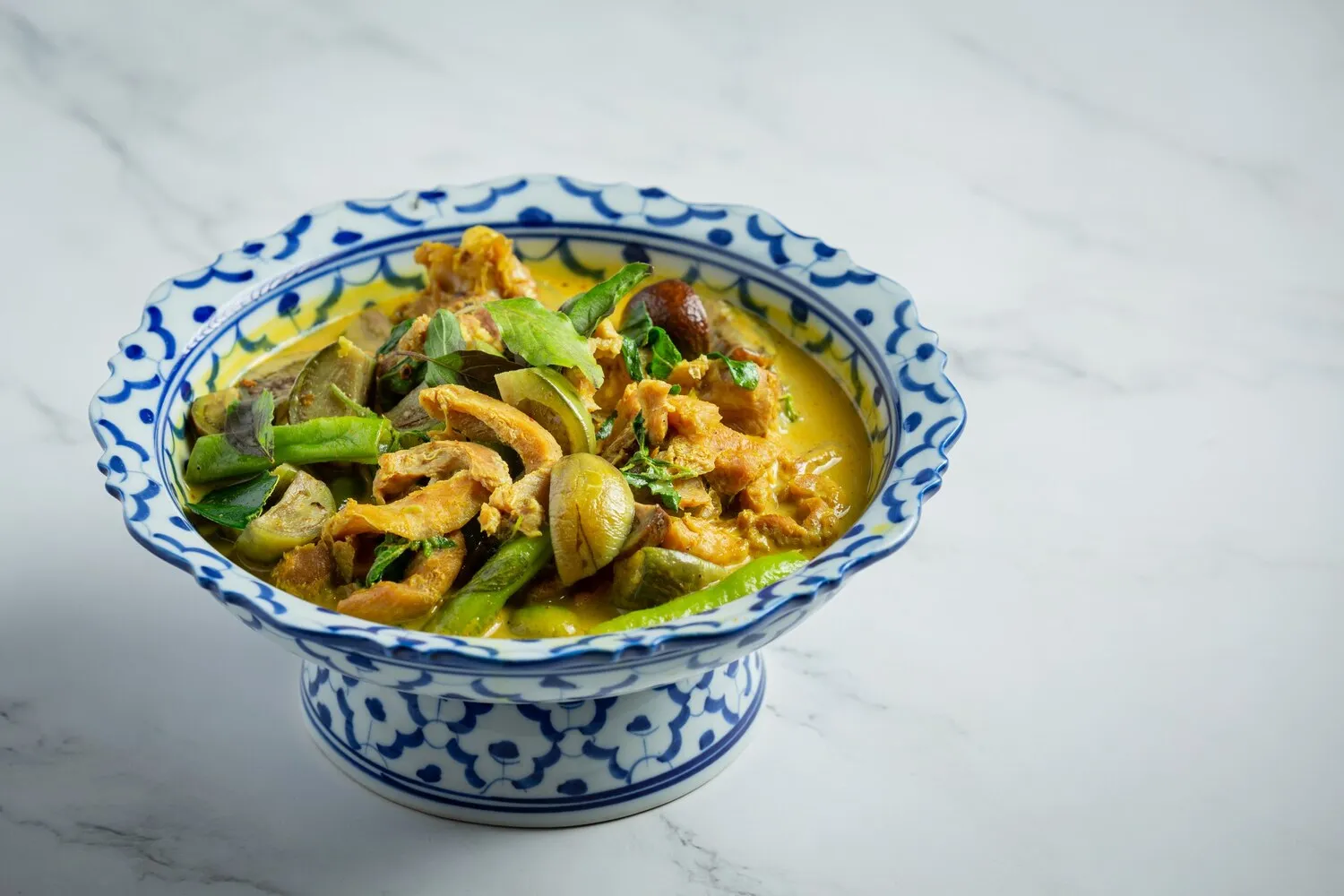
Panang Curry
A rich and creamy red curry with coconut milk, bell peppers, and basil leaves.
Nutrition Facts
* The % Daily Value (DV) tells you how much a nutrient in a serving of food contributes to a daily diet. 2,000 calories a day is used for general nutrition advice.
Bangkok Thai Restaurant
Panang curry is believed to have originated in the southern region of Thailand, possibly influenced by Malaysian cuisine. It's a relatively modern curry compared to older styles like green curry, likely developing in the late 19th or early 20th century. The name 'Panang' is derived from the island of Penang, off the west coast of Malaysia, hinting at potential connections to the region's culinary landscape.
Panang curry is a popular and widely enjoyed dish in Thailand and internationally, often featured on restaurant menus and considered a classic Thai culinary experience. It reflects the Thai emphasis on balancing sweet, sour, salty, bitter, and spicy flavors in a single dish.
Family Style Dining
In Thai culture, curries like Panang are often served as part of a shared meal with family or friends, accompanied by rice and other dishes. Sharing food is a fundamental part of Thai social dining etiquette.
Adaptability
Panang curry is quite adaptable and can be made with various proteins, including chicken, beef, pork, shrimp, or tofu, reflecting the flexibility of Thai cuisine to cater to different preferences and dietary restrictions.
Restaurant Staple
Panang curry is a commonly found menu item in most Thai restaurants globally and considered as one of the must try classic Thai curries.
Panang curry is characterized by its rich, creamy, and slightly sweet flavor profile, with a subtle nutty undertone. It's generally milder than other Thai curries like green or red curry.
The key flavors come from the panang curry paste, which typically includes dried chilies, galangal, lemongrass, kaffir lime zest, coriander root, cumin, shrimp paste, peanuts, and fish sauce. Coconut milk provides the creamy base and sweetness, while palm sugar is often added for extra sweetness. Bell peppers contribute a mild sweetness and texture, and basil leaves provide a fresh, aromatic finish. The peanut component is a key differentiating factor from Red Curry, which tastes very similar without the peanuts.
Coconut Milk Consistency
Use thick coconut milk for a richer, creamier curry. If the curry is too thick, add a little coconut cream or water to thin it out.
Peanut Flavor Enhancement
Toasted peanuts can be ground and added to the curry for an intensified nutty flavor.
Spice Level Adjustment
Adjust the amount of chili paste to control the spiciness of the curry. Start with a small amount and add more to taste.
Fresh Ingredients
Using fresh ingredients like basil and kaffir lime leaves will significantly enhance the aroma and flavor of the Panang curry.
Explore additional Curry dishes and restaurants
Explore CurryDiscover top dining spots and culinary experiences in Lubbock.
Explore LubbockLearn more about the food culture, restaurant scene, and culinary heritage of United States.
Explore United States